Street Fighter is the franchise that propelled the entire fighting game genre into popularity. Although the initial game went unnoticed, its sequel became an absolute sensation, inspiring numerous imitations and leading to countless upgrades, sequels, and spinoffs. Following this success, publisher Capcom released a series of prequel games (Street Fighter Alpha) and a sequel game (Street Fighter III) with varying levels of success. After a considerable hiatus, Street Fighter IV arrived, igniting a revival of the fighter genre, and was subsequently followed by Street Fighter V.
Now, we are presented with Street Fighter 6, a game that elevates the series to new heights through its fresh modes, mechanics, and other updates, which are poised to once again impact the genre as a whole. Notably, Street Fighter III was treated cautiously by Capcom, with every subsequent sequel serving as a lead-up to it. Consequently, Street Fighter 6 represents the first truly chronological addition to the Street Fighter series since 1999, marking a significant new beginning.
However, as we delve into ranking the Street Fighter games, it is essential to establish some guidelines. This franchise presents a particular challenge due to its multiple update editions and sequels within sequels. Therefore, for the purpose of this ranking, we will consider all the update editions as a single entry. Thus, Street Fighter V, Street Fighter V: Arcade Edition, and Street Fighter V: Champion Edition will be evaluated as a cohesive whole.
Furthermore, our ranking will solely include games with “Street Fighter” in the title, irrespective of the number of Street Fighter characters playable in any beloved Capcom crossover games. We apologize to fans of Capcom vs. SNK. Additionally, we have not considered any mobile games.
Without further ado, here is our ranking of the Street Fighter series…
15. Street Fighter 2: The Interactive Movie
The Interactive Movie stands out as a peculiar and intriguing game. In this unconventional experience, players assume the role of a Shadaloo Cyborg tasked with observing martial artists from the shadows and documenting their attacks. Essentially, it’s akin to playing a combination of Pokemon Snap and watching Street Fighter II: The Animated Movie. As you capture pictures of the fighters’ moves, your cyborg character grows stronger.
The climax of the game arrives in the form of a Street Fighter match. Well, to be precise, you participate in just one match, where you control the Cyborg, who is essentially a reimagined version of Ken, and face off against Ryu. The outcome of this showdown determines the ending, depending on whether you emerge victorious, suffer defeat, or achieve a flawless victory. Consequently, the entire game revolves around a single fight, following an hour-plus-long cutscene. Undeniably bizarre, this entry fails to justify itself beyond its novelty factor and is unlikely to be worth pursuing.
14. Street Fighter
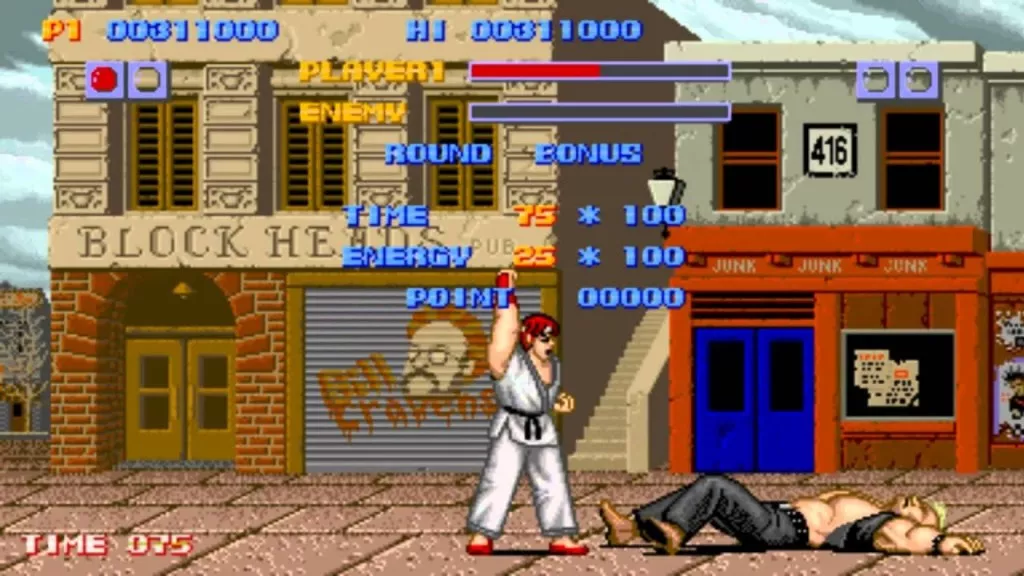
Despite the immense success of Street Fighter II in 1994, Capcom made little effort to elevate the profile of the original arcade game that laid the foundation for the series. This is not without good reason, as the first Street Fighter is, quite frankly, a dreadful video game.
The controls are shockingly poor, burdened with cumbersome mechanics that only add to the frustration. It is disappointing that players are limited to controlling either Ryu or Ken, who, inexplicably, offer identical gameplay experiences. Moreover, the character designs lack inspiration, to put it mildly. However, within this lackluster experience, there exists a barebones framework that hints at how the original game eventually paved the way for Street Fighter II to become the timeless classic that it is. That, regrettably, is the most favorable thing one can say about it.
13. Street Fighter: The Movie
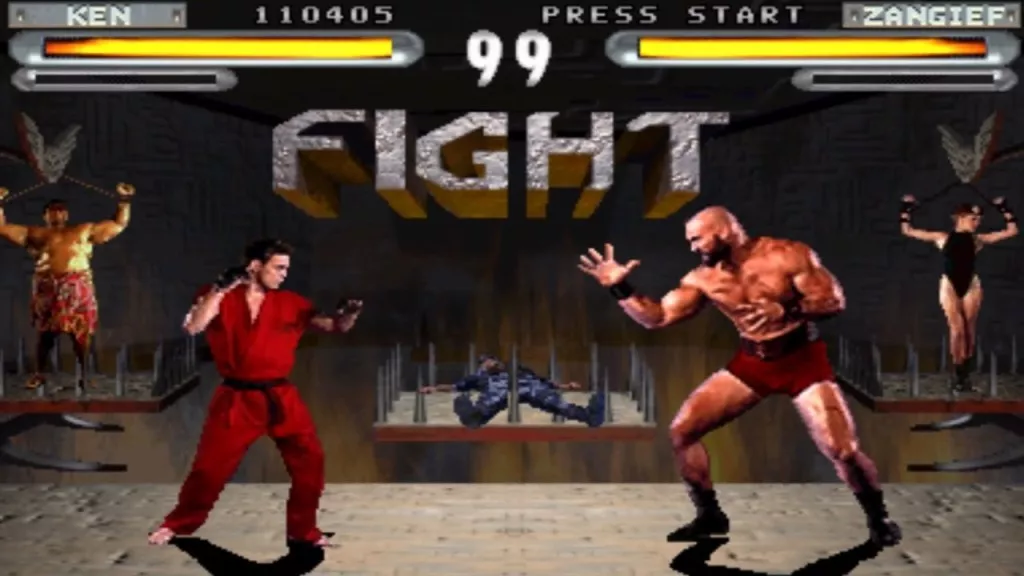
Street Fighter: The Movie was destined to become a punchline from the start. Hollywood’s attempt to adapt Street Fighter II into an action film resulted in a production that felt more like a GI Joe rendition. To add to the peculiarity, Capcom decided to create a game based on the movie, utilizing digitized versions of the actors, including Jean-Claude Van Damme portraying Guile. Yes, you read that correctly – a game based on a movie inspired by the original game.
While undeniably silly, the game manages to offer some enjoyment and stands as one of the better Mortal Kombat imitations ever released. However, it falls short compared to the games that served as its inspiration. Nonetheless, if you’re a fan of fighting games, there are certainly worse ways to invest your time. For a delightful mental exercise, try envisioning how the later characters in the Street Fighter series would fit within this movie-to-game continuity. Picture Dolph Lundgren as Gill, sporting vibrant red and blue body paint—a fascinating concept indeed.
12. Street Fighter 2010: The Final Fight
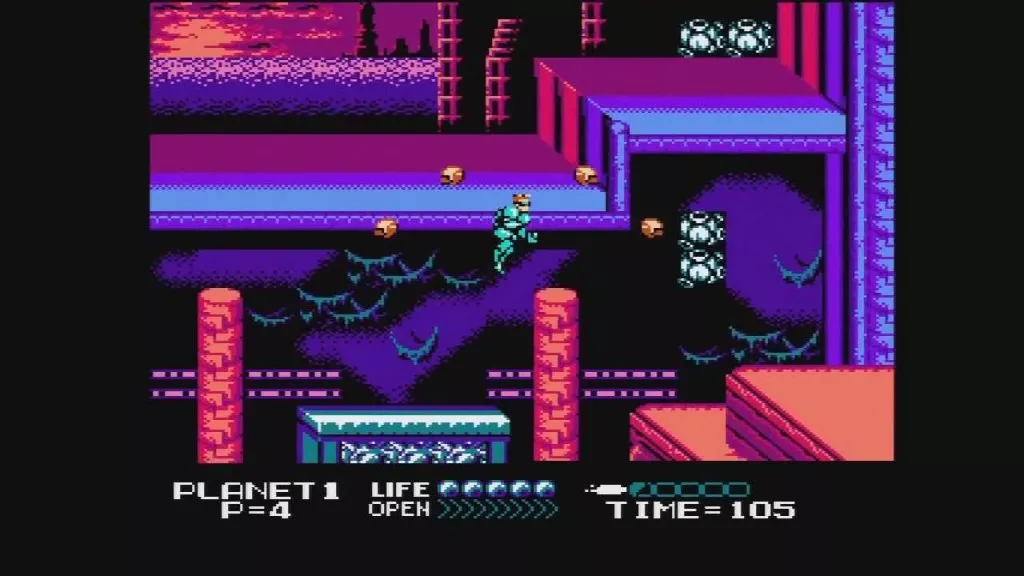
Considered the black sheep of the Street Fighter franchise, Street Fighter 2010: The Final Fight can be likened to Halloween 3: Season of the Witch within the series. It appears that Capcom had developed a compelling sci-fi action game for the NES, only to add “Street Fighter” to the title. The American localization even went so far as to assert that the protagonist was a futuristic, cyborg incarnation of Ken Masters, further emphasizing the tenuous connection. In reality, this side-scrolling game has absolutely no relation to Street Fighter.
Nonetheless, the game possesses notable strengths, including a diverse array of skills for Ken and impressive 8-bit graphics, alongside imaginative level designs. However, these positive aspects are overshadowed by the game’s punishing difficulty and, naturally, the disappointment stemming from its complete lack of association with the Street Fighter franchise, despite the misleading branding.
11. Marvel Super Heroes vs. Street Fighter
The Marvel vs. Capcom series can trace its origins back to Akuma’s appearance in X-Men: Children of the Atom, which subsequently led to several follow-up titles. Eventually, Capcom launched its highly successful crossover fighting game series. Among the various games in the franchise, Marvel Super Heroes vs. Street Fighter stands out as the most forgettable entry. While it introduced assists and featured a couple of enjoyable secret characters (such as Mecha Zangief), its overall impact was limited. Additionally, the game introduced Norimaru, a joke character exclusive to Japan due to complex rights issues.
The rest of the game feels recycled, with secret characters being mere recolored versions of existing fighters. For instance, turning Blackheart red and renaming him “Mephisto” reflects a lack of creativity. Nonetheless, the classic Marvel tag system still provides an entertaining experience. However, the game’s roster and overall aesthetic were more appealing when the Marvel side primarily consisted of X-Men characters.
10. Street Fighter X Mega Man
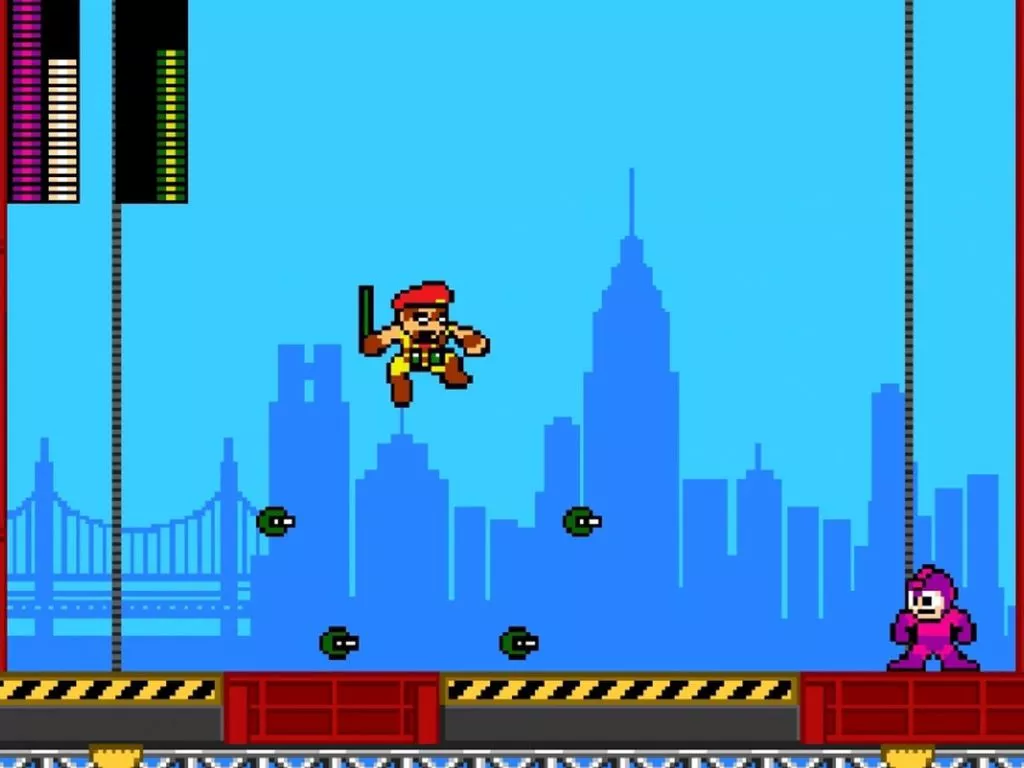
Once upon a time, Capcom stumbled upon a remarkable fan project that exhibited immense potential. Recognizing its quality, Capcom granted its official seal of approval and released the game to the world, completely free of charge. Thus, an 8-bit Mega Man game was born, featuring a unique twist: all of the Robot Masters were randomly chosen from the roster of Street Fighter characters. Ryu, Chun-Li, Rose, Urien, Blanka, Dhalsim, Crimson Viper, and Rolento each had their own stages, accompanied by chiptune remixes of their iconic themes. Progressing through these stages would ultimately lead to confrontations with the Four Kings of Shadaloo, and perhaps even a hidden battle against Akuma.
This delightful mashup of two beloved worlds offers a mix of endearing elements, along with hit-or-miss level designs. Witnessing Mega Man wield his new weapons against an 8-bit version of Dan Hibiki is a charming touch. However, the boss battles can prove quite challenging, especially during the classic boss rush at the game’s climax.
While it may not quite reach the level of excellence achieved by the original Mega Man games, the effort and dedication poured into this project are undeniably evident.
9. Street Fighter IV
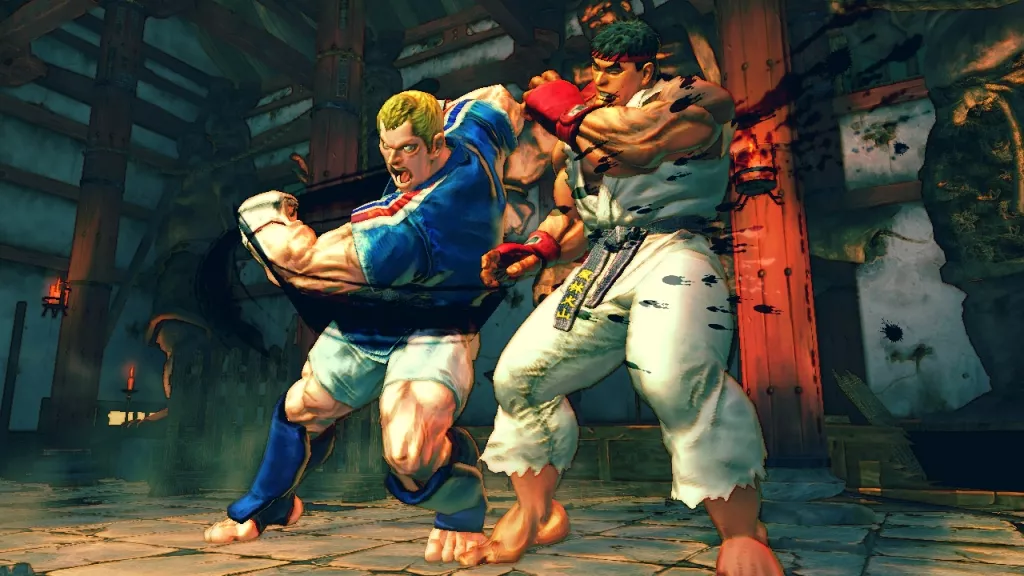
After a nine-year gap since the last major Street Fighter release, Capcom’s streak of fighting games had come to a lackluster end with 2004’s Capcom Fighting Evolution. However, salvation arrived in the form of Street Fighter IV, breathing new life into the series. This sequel ventured into the realm of 3D while preserving the beloved 2D gameplay that defined the franchise. Familiar characters returned with a touch of added personality, and subsequent updates introduced fighters from the Alpha and Street Fighter III eras, bridging the gap between different periods of the series.
Street Fighter IV played a crucial role in introducing the Street Fighter universe to a new generation, yet it fails to stand out significantly on its own. The inclusion of the Focus Attack and Ultra Combo mechanics was a welcome addition, but lacked groundbreaking innovation. Moreover, Seth, the primary antagonist, pales in comparison to previous iconic Street Fighter villains, and the surrounding storyline feels somewhat uninspired. While the game accomplished its purpose, it lacks the enduring impact of its predecessors.
8. Street Fighter EX
In 1996, Arika, a developer, ventured into bringing Street Fighter into the realm of three dimensions while retaining the classic 2D gameplay. This endeavor resulted in a series of games known as Street Fighter EX, mostly comprising one-on-one fighters, except for Street Fighter EX3, which implemented a tag system. As the series progressed, the roster gradually expanded, primarily drawing characters from Street Fighter 2, with the notable inclusion of fan-favorite Sakura Kasugano from Street Fighter Alpha. Additionally, Arika introduced their own cast of characters, some of whom made a more significant impact than others.
These games showcased solid gameplay mechanics, but unfortunately, the art direction did not age well over time, losing its initial appeal. The release of Street Fighter EX3 as a PlayStation 2 launch title, in its particular state, did not do any favors for the series. It seemed that there was an excessive focus on the Arika-exclusive cast, although it was refreshing to have iconic characters such as Guile, Blanka, and Vega included when Street Fighter games were beginning to shift away from the classic roster.
7. X-Men vs. Street Fighter
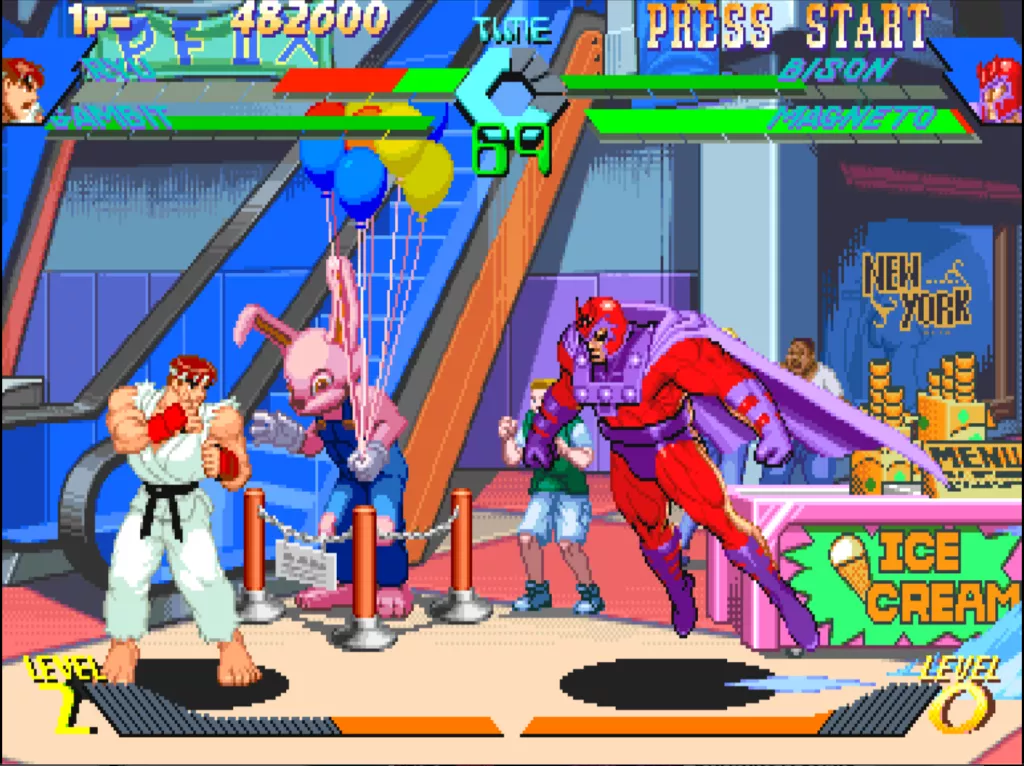
During this period, the connection between Marvel and Capcom grew stronger, leading to the publisher’s line of fighting games taking a delightful turn towards utter madness. The crossover between Street Fighter and the X-Men corner of Marvel resulted in a truly peculiar combination, yielding unexpected moments like the odd couple pairing of Sabretooth and Dhalsim, as well as the absurdity of Rogue being able to mimic Akuma’s Raging Demon attack by kissing him. We also witnessed Magneto triumphantly taking down M. Bison and persuading his henchmen to join his mutant brotherhood.
Notably, this game marked Capcom’s first foray into the tag team format, adding an extra layer of excitement to an already fresh experience in the mid-’90s. Witnessing Ryu transition from hurling fireballs to unleashing laser beams, seeing Chun-Li soar to incredible heights that require the screen to pan upwards, or witnessing the transformation of Apocalypse into an enormous, visually stunning sprite—these were just a few of the captivating moments. While it may not be the absolute pinnacle of the Marvel vs. Capcom series, it undeniably stands as one of the most innovative entries, pushing boundaries and offering a wealth of fresh ideas.
6. Street Fighter V
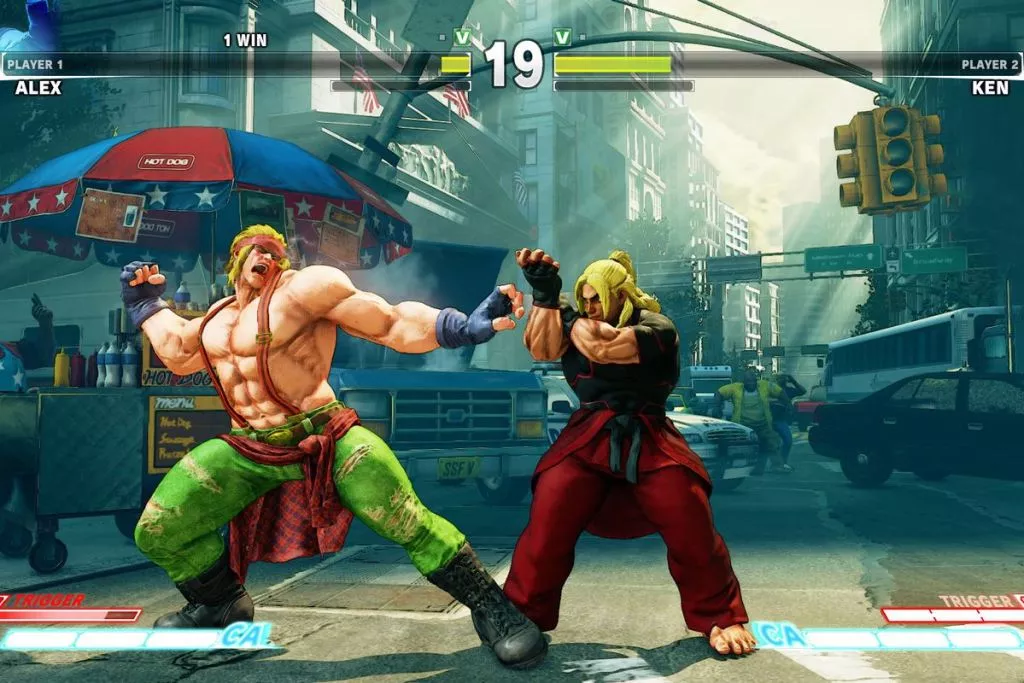
Street Fighter V had an incredibly rocky start, with a disappointing launch that lacked essential features such as a substantial character roster, arcade mode, and a compelling story mode. Additionally, persistent online server issues further tarnished its initial reception. It was an outright letdown. However, over time, the game gradually improved, steadily introducing new characters, stages, and additional content. Through years of DLC and updates, Street Fighter V eventually transformed into an exceptional fighting game.
One of the standout features that set Street Fighter V apart from its predecessors is the V-Gauge system, which added a unique twist to the gameplay. The concept gained even more strength as the game expanded with extra V-Trigger options and introduced more fighters that harmonized with this mechanic. Speaking of the characters, the roster boasts some true gems. Capcom revitalized old characters who didn’t make an appearance in Street Fighter IV, giving them fresh updates and redesigns. Birdie, Rainbow Mika, Urien, Gill, and Oro are just a few examples. Moreover, previously cameo-only characters like Kolin, Zeku, and Ed received the spotlight, becoming fully developed fighters who brought a wealth of personality to the game. Furthermore, Street Fighter V even took the enigmatic Q from Street Fighter III: Third Strike and reintroduced him in a quasi-form as G, the self-proclaimed President of Earth.
5. Street Fighter X Tekken
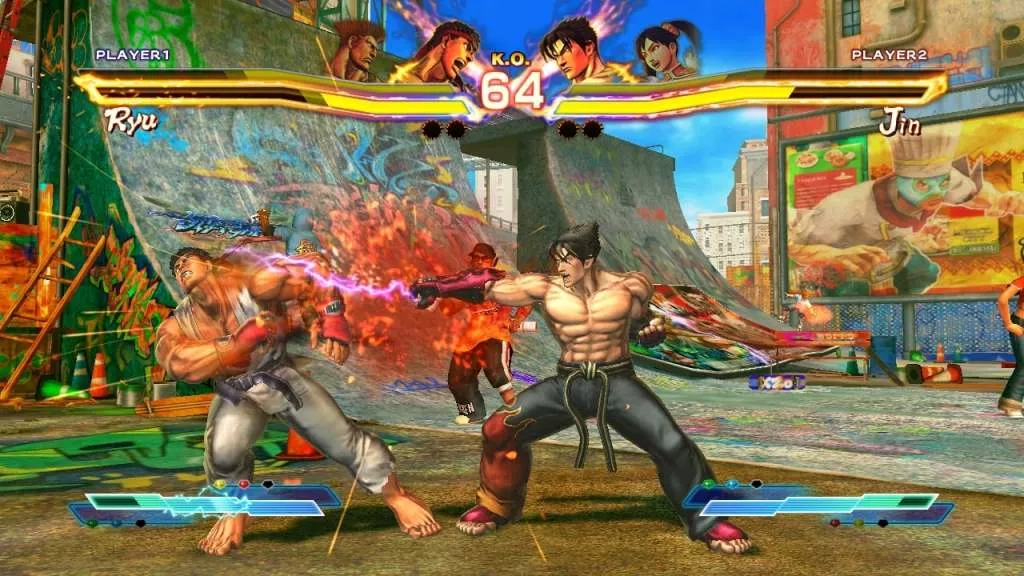
Similar to Street Fighter V, Street Fighter X Tekken experienced a disastrous debut. The inclusion of a controversial “pay to win” gem system through DLC, excessively long fights, and an unsuccessful Pandora mechanic contributed to its initial downfall. Although the 2013 patch update significantly improved the game, it was too little too late for many players who had already dismissed the crossover and moved on.
Despite the need for refinement in several core aspects of the game, Street Fighter X Tekken undeniably showcased a remarkable evolution of Street Fighter IV’s foundation. It transformed the gameplay into a tag fighter and successfully reimagined numerous Tekken characters with Capcom’s signature style. Let’s not forget the inclusion of Ugly Box Art Mega Man because, well, why not? Additionally, the game’s whimsical storyline setup, reminiscent of “It’s a Mad, Mad, Mad, Mad World,” featuring the casts of Street Fighter and Tekken, added a delightful touch. We can’t help but desire more Street Fighter games that follow the wacky adventures of Zangief and Rufus together.
4. Street Fighter II
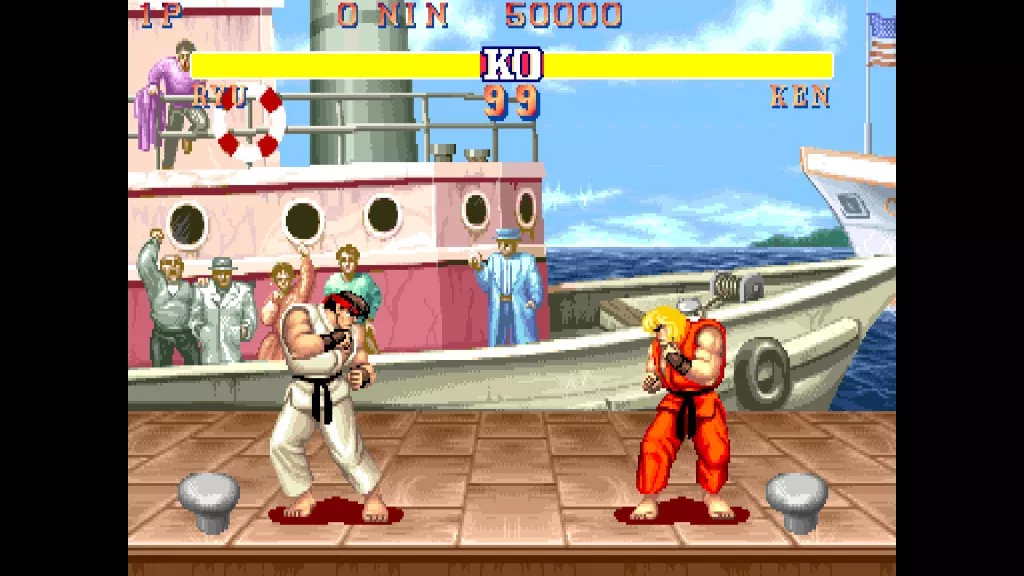
We cannot emphasize enough the groundbreaking and pivotal role Street Fighter II played in shaping the fighting game genre. While it didn’t single-handedly invent the genre, its release propelled it to unprecedented heights. From start to finish, Street Fighter II delivered exceptional quality, boasting a memorable cast of characters with no real weak links. Capcom’s continuous efforts to build upon the game over several years culminated in the timeless masterpiece that is Super Street Fighter II: Turbo, a game that remains captivating even after nearly three decades.
There is an abundance of games that owe their existence to the moment a Chinese Interpol agent started unleashing a flurry of kicks on a car for no apparent reason. Street Fighter II is a true classic in every sense of the word. However, being the most influential game does not automatically make it the best. While it laid an unshakable foundation, subsequent games have managed to refine and enhance its design, pushing the boundaries of what the genre can achieve.
3. Street Fighter 6
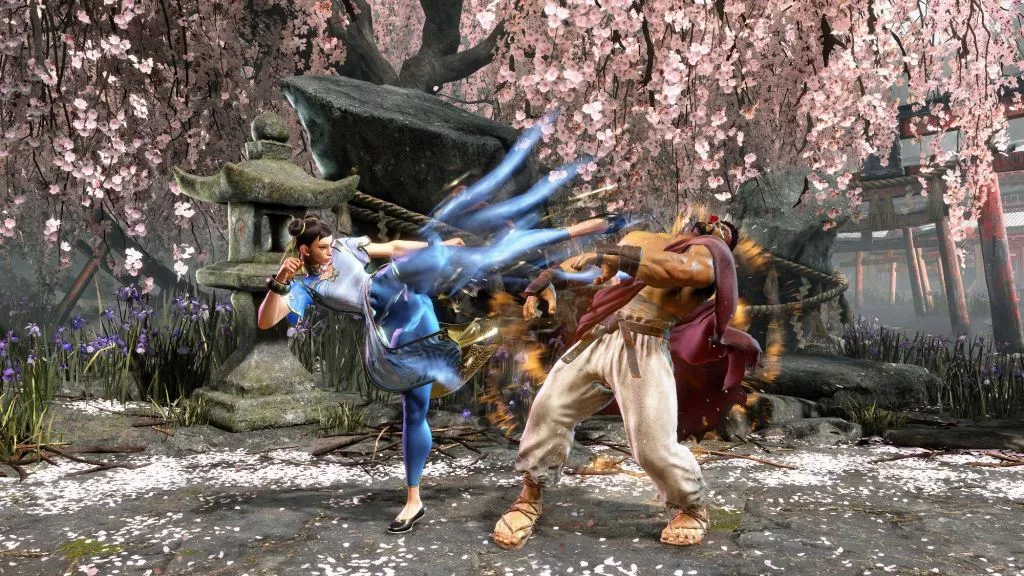
Ranking this installment is quite challenging due to its novelty. Unlike its predecessor and the Tekken crossover, Street Fighter 6 made an impact right from the moment it debuted. The gameplay is absolutely phenomenal, and the addition of the Drive system adds an exciting dimension to the formula. Who could have imagined that receiving text messages from Ryu in World Tour Mode would become a reason to jump out of bed in the morning? And let’s not forget the unique move of Blanka parrying hits with his twerking. This game truly has a lot to offer, and the possibilities are boundless.
However, it’s important to consider that it’s still early days for this game. The roster is expected to expand over time, but with only 18 characters at the start, it feels slightly limited compared to contemporary standards. Many fan favorites are notably absent, and it remains uncertain if they will ever make an appearance. With that being said, there’s no denying that this entry has the potential to claim the top spot in a year or so. As it stands now, it serves as a fantastic starting point with immense promise for the future.
2. Street Fighter Alpha
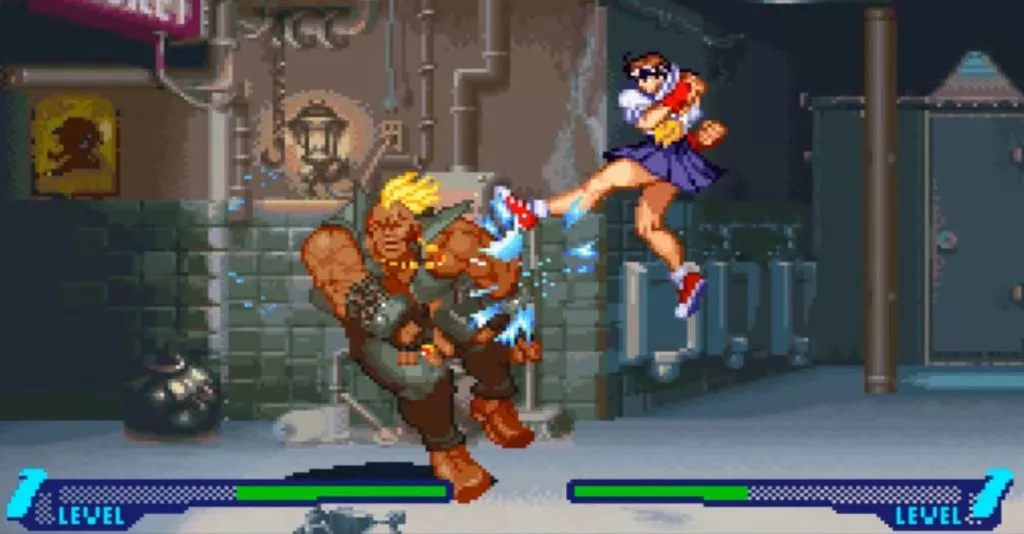
After Capcom had exhausted Street Fighter II, it was time to venture forward—or rather, backward. Street Fighter Alpha served as an “in-betweenquel,” bridging the events of Ryu’s fateful encounter with Sagat (in Street Fighter I) and M. Bison’s World Warrior tournament (in Street Fighter II). The series took on a more vibrant and animated aesthetic, with a strong emphasis on world-building and expanding the lore. Fresh fighters were introduced, younger versions of Street Fighter II characters made their debut, and even characters from Final Fight made appearances. Notably, the game introduced Charlie Nash, who would later become the focal point of Guile’s quest for vengeance.
The series improved with subsequent sequels, particularly with the home ports of Street Fighter Alpha 3. These releases continually expanded the roster, eventually encompassing the entire lineup of Super Street Fighter II: Turbo and introducing numerous additional characters. Capcom also introduced various gameplay variations, allowing players to choose their preferred style or “ism” for matches, adding depth and variety to the gameplay experienc
1. Street Fighter III
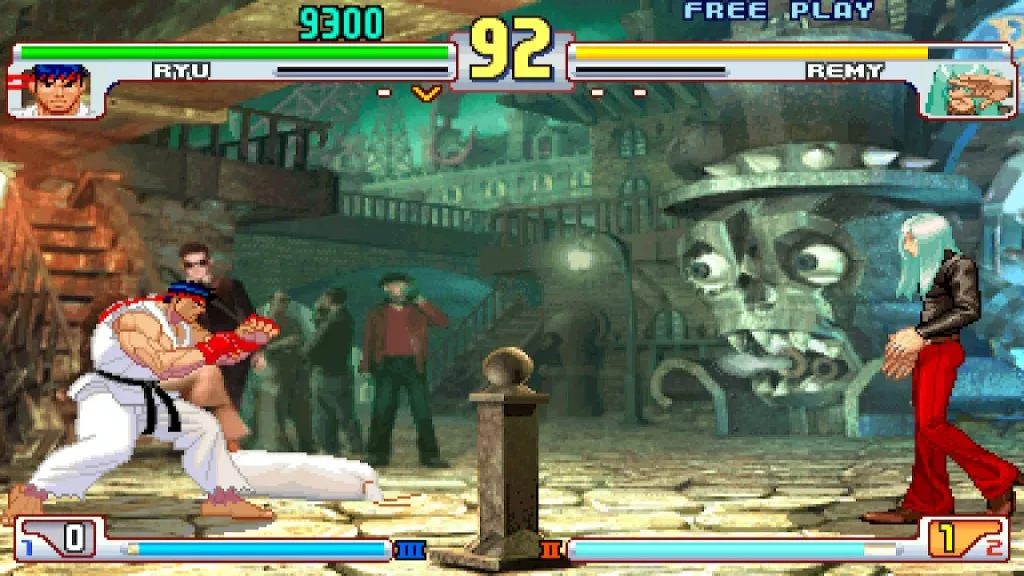
Upon its release in 1997, this arcade cabinet suffered a major setback and was considered a flop. The high cost of the hardware, coupled with the decision to turn it into a Street Fighter game late in its development, contributed to its underwhelming reception. Additionally, the introduction of mostly unfamiliar characters disappointed fans who were expecting familiar faces. Compounded by the prevailing popularity of 3D graphics at the time, Street Fighter III’s 2D sprites failed to captivate the public. Nevertheless, this disappointment was soon overshadowed by the game’s subsequent update, Street Fighter III: Third Strike, which marked the franchise’s pinnacle.
The sprite work in Street Fighter III is undeniably remarkable, featuring exceptional gameplay and remarkably fluid animations. The music across the game is outstanding. Notably, this installment boasts some of the finest character designs in the Street Fighter series, with standout additions like Alex, Ibuki, Urien, and Q. The parry system, while challenging to master, offers a rewarding experience once conquered. While many of the Street Fighter II sequels aimed to bring the 1991 classic into the modern era, it is Street Fighter III that truly felt like a significant leap forward for the franchise.
